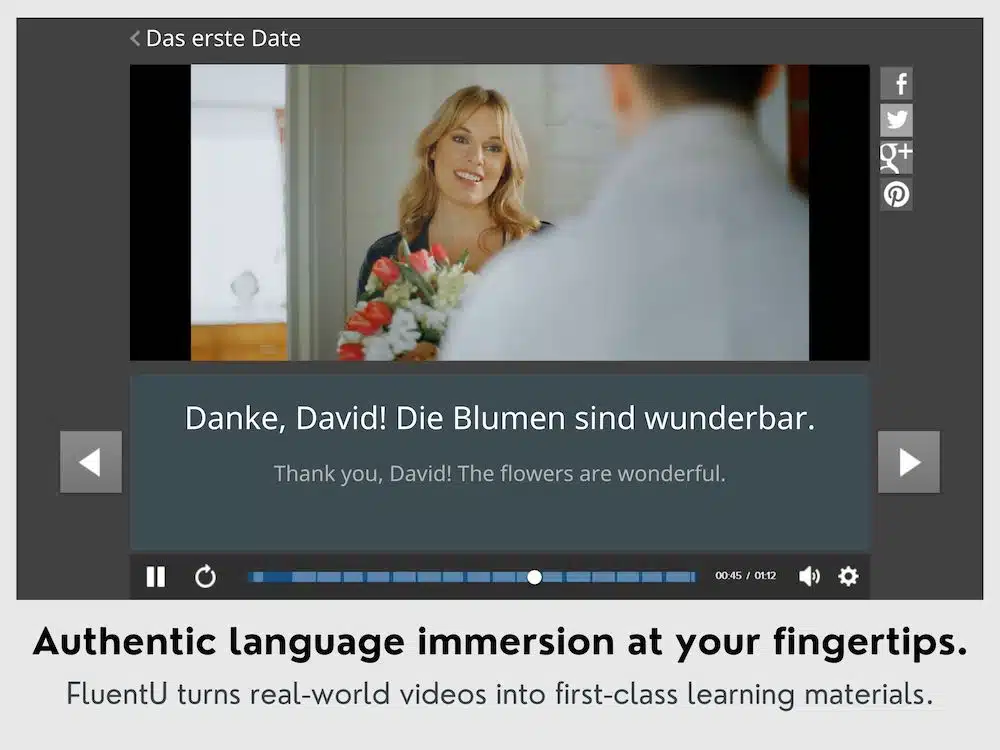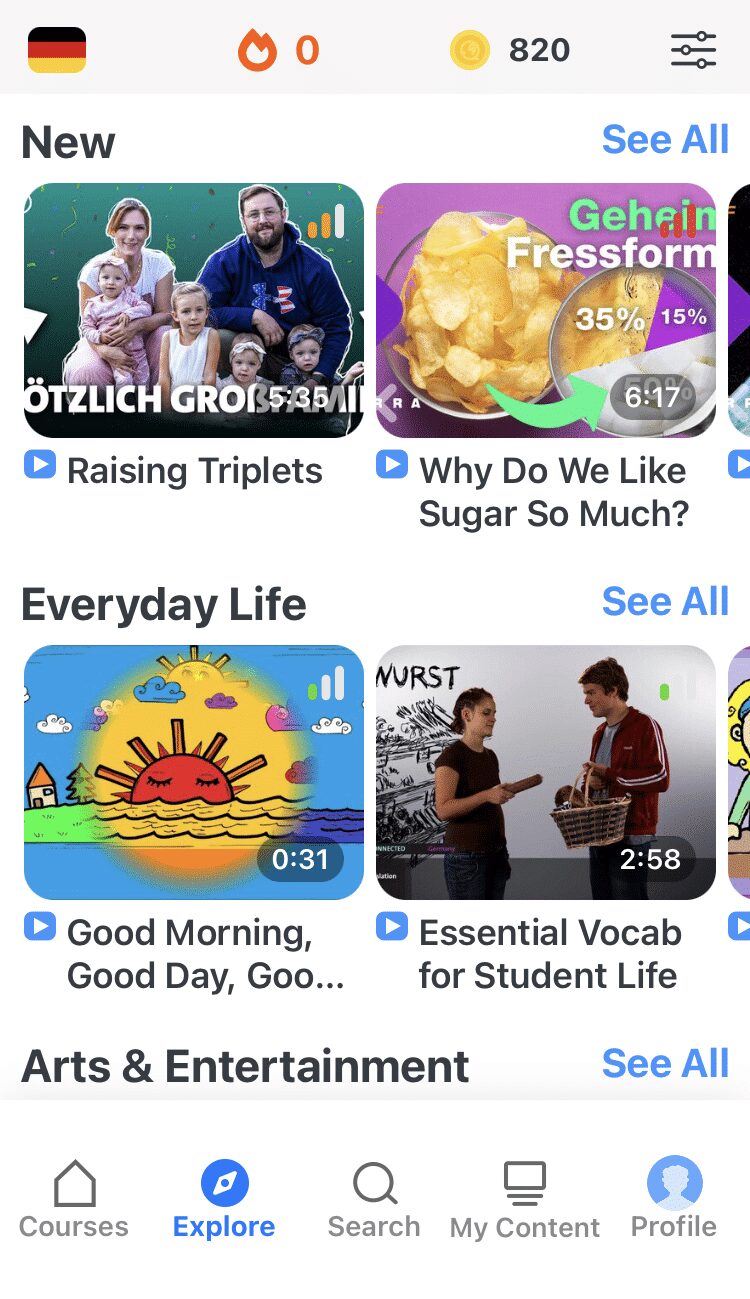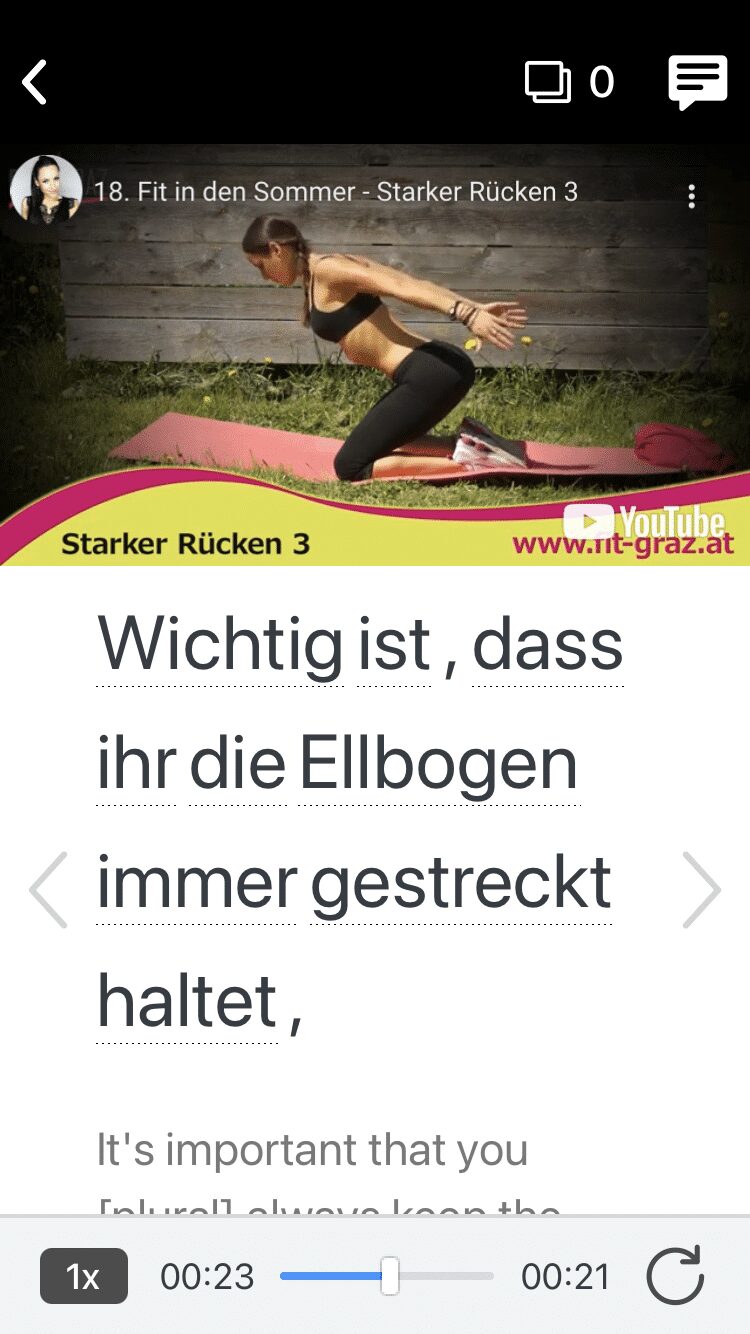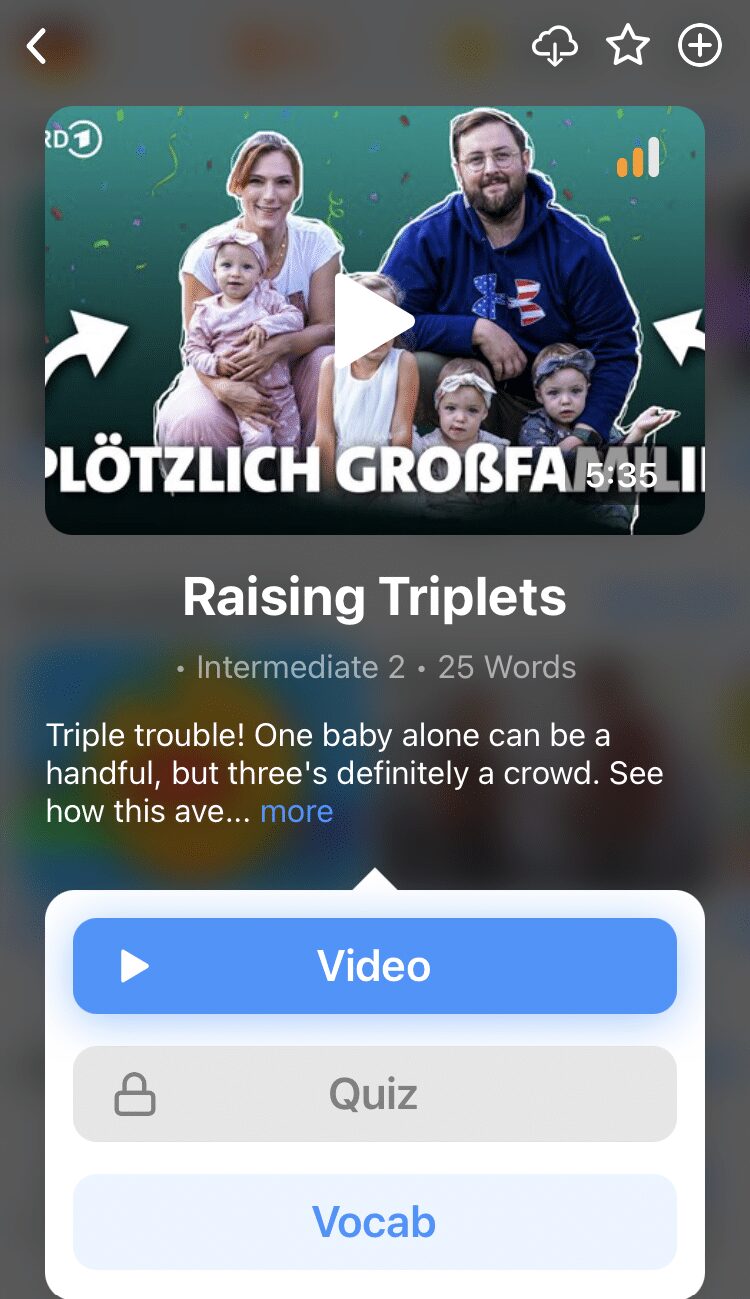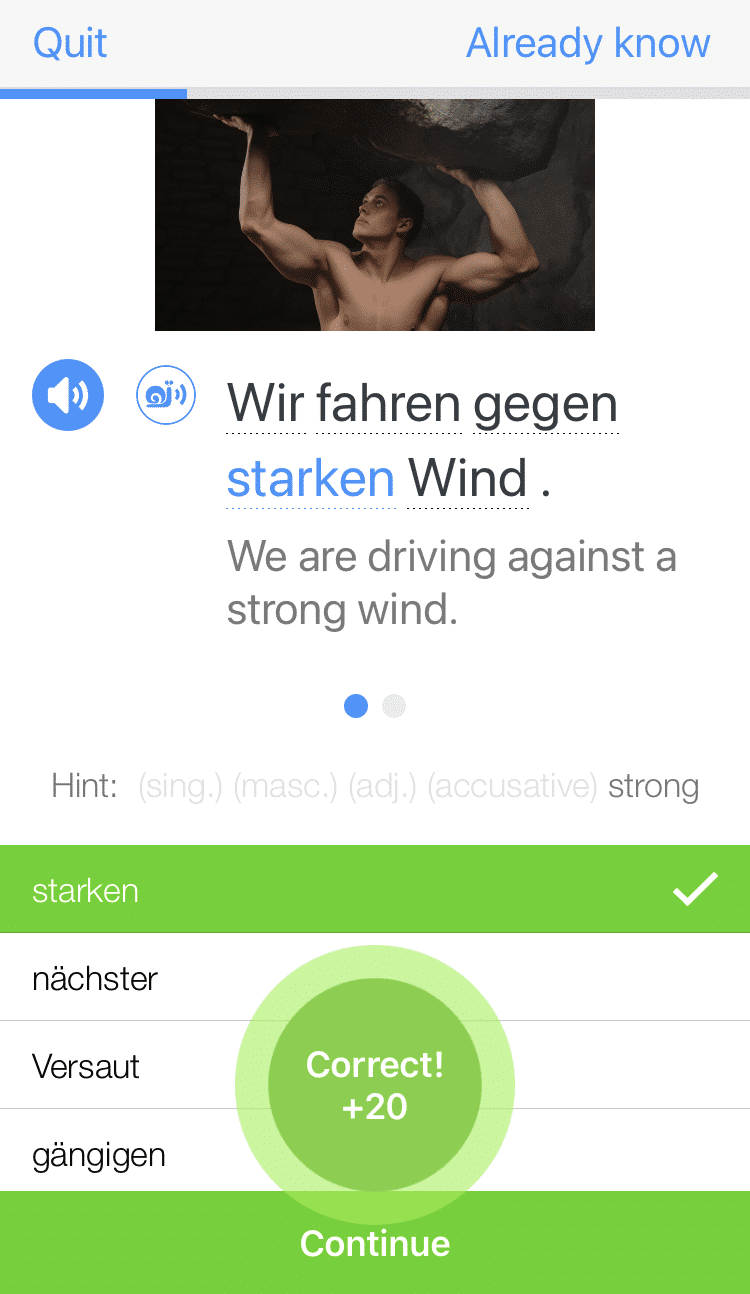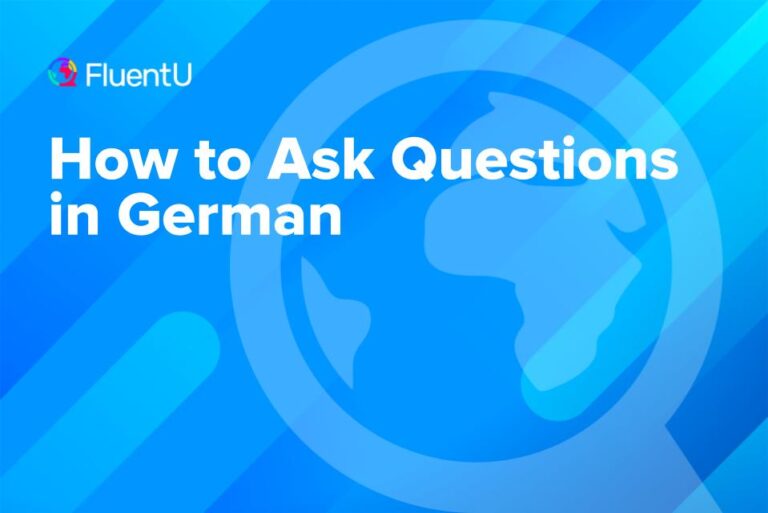Contents
- What are German Relative Pronouns?
- 10 Examples of German Relative Pronouns in Action
- 1. Die Frau, die singt, ist meine Mutter.
- 2. Das ist der Typ, der Gitarre spielt.
- 3. Das ist der Mann, den ich liebe.
- 4. Sie ist ein Mensch, dem man nicht helfen kann.
- 5. Die Frau, deren Handy ich benutzt habe.
- 6. Das sind die Männer, mit denen ich Schach gespielt habe.
- 7. Was er uns gesagt hat, war nicht wahr.
- 8. Wer teilnehmen will, soll sich melden.
- 9. Ich möchte irgendwo arbeiten, wo ich kein Auto brauche.
- 10. Weißt du, wo wir hingehen müssen?
- How to Practice German Relative Pronouns
- And One More Thing...
German Relative Pronouns
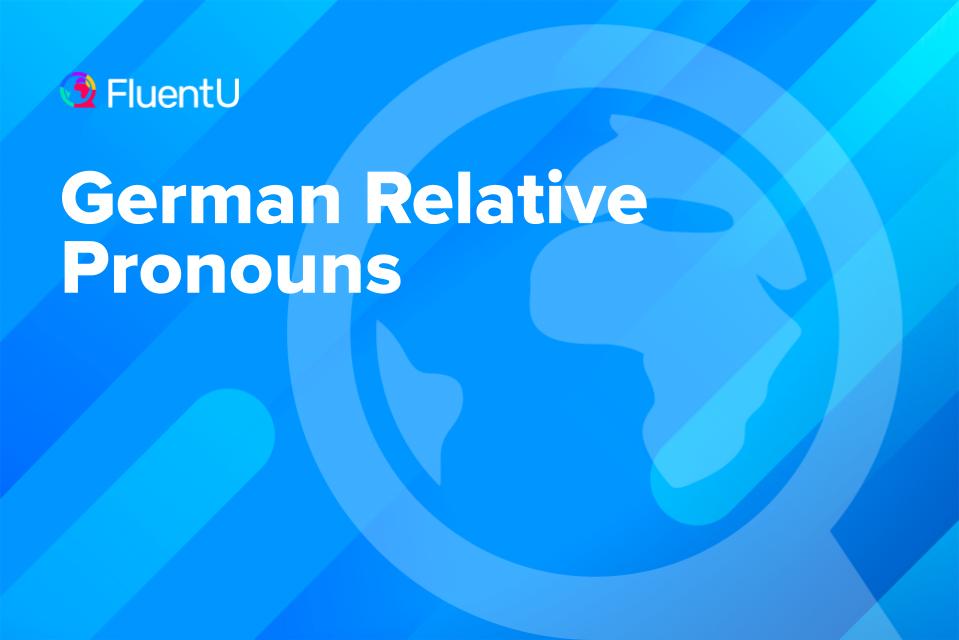
Building a basic German sentence is quite easy once you have a good lexicon.
But turning a simple sentence into a complex sentence requires various clauses to be strung together.
And how do we do that? By using German relative pronouns.
Read on to learn what German relative pronouns are and see how they are used in 10 example sentences!
Download: This blog post is available as a convenient and portable PDF that you can take anywhere. Click here to get a copy. (Download)
What are German Relative Pronouns?
Relative pronouns are the words that join two clauses together. If you want to add an extra clause to a sentence, you’ll be joining it up with a relative pronoun.
The extra clause also has a special name: it’s a relative clause—or Relativsatz in German.
In English, “that,” “who” and “which” are examples of commonly used relative pronouns. We use these words to refer back to something in the previous clause:
I have a friend who plays tennis.
The who refers back to the friend and allows us to avoid repetition.
In most cases, German relative pronouns are the same as the definite articles. So that’s der, die and das. But how do we know which one to use? We need to look back at the noun in the previous clause that we are referring back to. Here’s an example:
Der Hund, der schwarz ist. (The dog which is black.)
As der Hund (the dog) is a masculine noun, the relative pronoun we need also has to be masculine. So we just repeat the der .
However, as you’ll see in the sentences below, it isn’t always quite so straightforward.
Before moving on to the examples, here’s a quick summary of all of the German relative pronouns:
| Case | Masculine | Neutral | Female | Plural |
|---|---|---|---|---|
| Nominative | der | die | das | die |
| Accusative | den | die | das | die |
| Genitive | dessen | deren | dessen | deren |
| Dative | dem | der | dem | denen |
10 Examples of German Relative Pronouns in Action
1. Die Frau, die singt, ist meine Mutter.
Translation: The woman who is singing is my mother.
An easy one to get us started with. Since the noun Frau (woman) is feminine and is performing the action herself, putting her in the nominative case, to refer back to her, we just use the feminine article die .
One thing to note in this sentence is the positioning of the verbs. In German, if you ever follow a verb with a comma, you must follow the comma with another verb. This is the “verb comma verb” rule.
2. Das ist der Typ, der Gitarre spielt.
Translation: That’s the guy who plays guitar.
Typ (guy) is a masculine noun, again in the nominative case, so the relative pronoun is der.
There’s some more verb action to note in the example: Verbs in relative clauses always have to be sent to the end of the clause.
This is a very strange thing for native English speakers to comprehend as our verbs are stuck in one place. If we were to literally translate the above sentence into English it’d read “That’s the man who guitar plays.” Sounds weird! But verbs get sent to the end of clauses quite a bit in German, so make sure you know exactly where your verbs in your spoken and written German should be placed!
3. Das ist der Mann, den ich liebe.
Translation: That is the man that I love.
For this relative clause, we need to use the masculine relative pronoun because Mann is a masculine noun. So that’d be der right? Ah, not in this case!
This example brings up the second important thing to consider when it comes to relative clauses: the case.
Up until now, we’ve been dealing with examples where the relative pronoun is “doing” the action of the verb, making it the subject of the sentence, and ergo in the nominative case.
In the nominative case, we use der, die, das and die for plural, just as we have been doing.
But in this example, the noun Mann isn’t the subject of the sentence in the relative clause—he’s not doing the loving here, but is the one being loved! This means he is receiving the action of the verb, making him the direct object, and putting him in the accusative case.
And in the accusative case, der changes to den !
Luckily, all the other articles stay the same in the accusative case, so it’s just those pesky masculine nouns you need to watch out for. Here’s a quick review of the two most basic cases in German, the nominative and accusative, in case you need a little refresher.
4. Sie ist ein Mensch, dem man nicht helfen kann.
Translation: She is a person whom you can’t help.
Above we tackled the accusative case and relative pronouns. Now, we have to struggle with the dative.
Helfen is one of those verbs that requires the dative case. As with the above example, we just have to place the dative masculine relative pronoun ( dem ) in the place of the nominative one (der). So, that’s how der becomes dem.
5. Die Frau, deren Handy ich benutzt habe.
Translation: The woman whose cell phone I used.
Okay, so now things start to become trickier.
Before when we were changing cases, we could look at a table of definite articles and it would double up as a table of relative pronouns. But now that we’re dealing with possession, we need to introduce some new words to our lexicon. Namely: Dessen and deren .
These are the genitive relative pronouns. Dessen is used to refer back to masculine and neuter nouns. Deren is used for feminine and plural nouns.
Notice that these possessive relative pronouns correspond to the owner, such as die Frau (the woman), and not to the object in possession, das Handy (the cell phone).
So, looking at the example above, we need to use the feminine form deren as it refers back to Die Frau (the woman).
6. Das sind die Männer, mit denen ich Schach gespielt habe.
Translation: Those are the men with whom I played chess.
Okay, I confess, there’s another word you need to add to your German vocabulary: Denen . But, once you’ve mastered slipping dessen and deren into your language, you’ll have no problems whatsoever with this useful word.
If your relative clause involves a plural noun in the dative case, then you’ll need to use the dative plural relative pronoun, which is denen.
In the example above, we need the dative case because mit (with) always takes the dative. In this way, the dative plural relative pronoun, denen, refers back to the plural die Männer (the men). One of the most common mistakes made by German learners is using the dative plural definite article, den. As so many of the relative pronouns are the same as the definite articles, it’s an easy pitfall to fall into!
7. Was er uns gesagt hat, war nicht wahr.
Translation: What he told us wasn’t true.
Don’t think your relative clauses should be left for the end of a sentence—here’s a sentence that starts with a relative clause. And it also shows that you don’t need to use der, die or das—or one of their many different counterparts—as a relative pronoun.
It’s also possible to use wo (where), was (what) and wer (who/whoever). Whichever word you decide to use though, always remember to send that verb to the end of the clause!
8. Wer teilnehmen will, soll sich melden.
Translation: Anyone who wants to take part should contact us.
Here we have wer as our relative pronoun. When you’re translating a relative clause that begins with wer it’s worth bearing in mind that it doesn’t always have to be translated literally as “who.” More often than not, wer at the beginning of a sentence is actually translated as “whoever” or “anyone who”.
9. Ich möchte irgendwo arbeiten, wo ich kein Auto brauche.
Translation: I’d like to work somewhere where I don’t need a car.
All is explained below…
10. Weißt du, wo wir hingehen müssen?
Translation: Do you know where we have to go?
Examples 9 and 10 both show wo as the relative pronoun. As you can see, unlike with der, die or das, it doesn’t change its form, no matter what the case of the relative clause may be. Easy, huh?
How to Practice German Relative Pronouns
As well as writing your own sentences, there are also plenty of useful resources that you could use to practice German relative pronouns:
- Lingolia Deutsch offers a free exercise with 15 example sentences. Simply click on the field and select the relative pronoun from the drop-down menu.
- The FluentU program can help you see how German relative pronouns are used in everyday life by native speakers in an array of videos. You could also try searching for some of the pronouns to find examples of them used in context.
FluentU takes authentic videos—like music videos, movie trailers, news and inspiring talks—and turns them into personalized language learning lessons.
You can try FluentU for free for 2 weeks. Check out the website or download the iOS app or Android app.
P.S. Click here to take advantage of our current sale! (Expires at the end of this month.)
- On German.net, you can find an exercise on a variety of German pronouns, including relative pronouns.
From all the above examples, you can see that relative pronouns and relative clauses aren’t all that scary.
They just involve a bit of time getting used to altering them to fit the case of the clause and knowing where exactly the verb needs to go.
Now you can start using all this exciting relative pronoun knowledge to boost your German!
Download: This blog post is available as a convenient and portable PDF that you can take anywhere. Click here to get a copy. (Download)
And One More Thing...
Want to know the key to learning German effectively?
It's using the right content and tools, like FluentU has to offer! Browse hundreds of videos, take endless quizzes and master the German language faster than you've ever imagine!
Watching a fun video, but having trouble understanding it? FluentU brings native videos within reach with interactive subtitles.
You can tap on any word to look it up instantly. Every definition has examples that have been written to help you understand how the word is used. If you see an interesting word you don't know, you can add it to a vocabulary list.
And FluentU isn't just for watching videos. It's a complete platform for learning. It's designed to effectively teach you all the vocabulary from any video. Swipe left or right to see more examples of the word you're on.
The best part is that FluentU keeps track of the vocabulary that you're learning, and gives you extra practice with difficult words. It'll even remind you when it’s time to review what you’ve learned.
Start using the FluentU website on your computer or tablet or, better yet, download the FluentU app from the iTunes or Google Play store. Click here to take advantage of our current sale! (Expires at the end of this month.)
